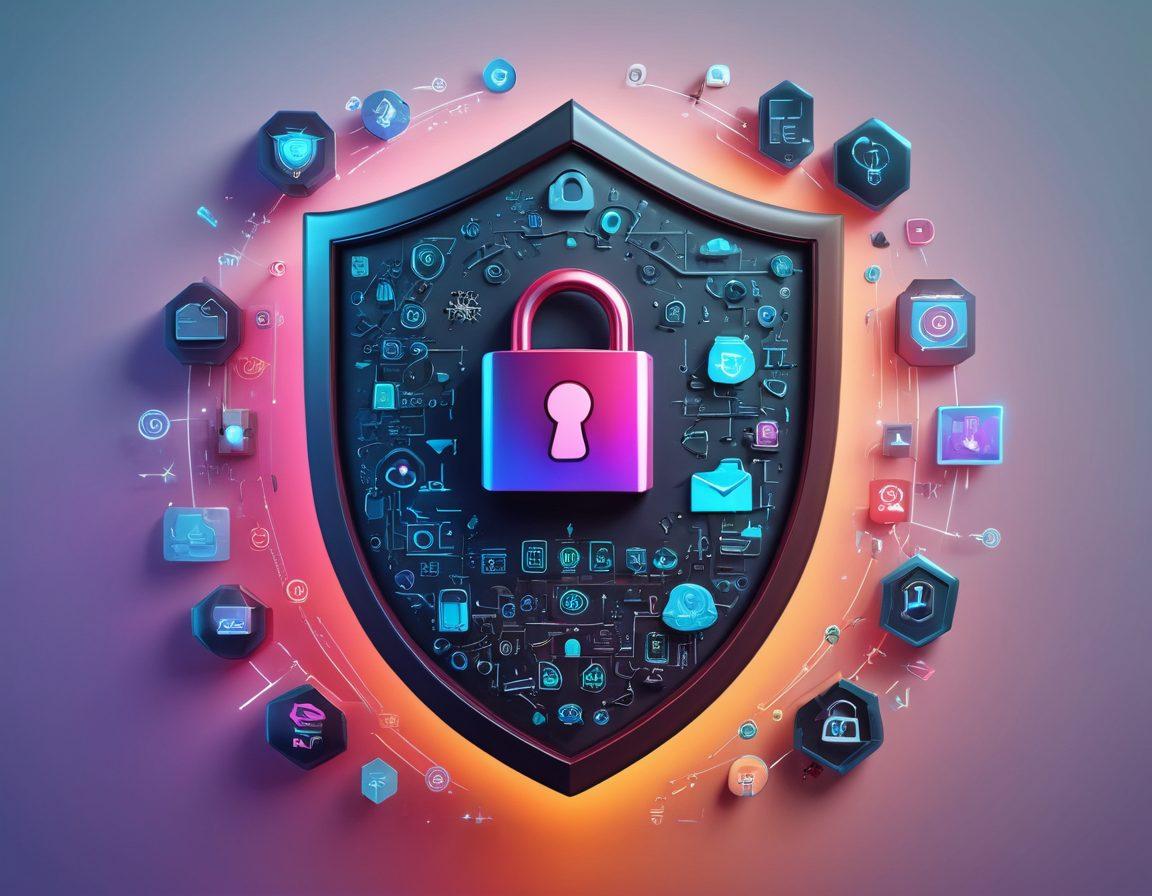Navigating the Digital Diary: Understanding Vulnerabilities in Our Online Journals
In our hyper-connected world, where our lives are intricately woven into the fabric of technology, the act of journaling has evolved from handwritten notebooks to the fast-growing phenomenon of weblogs and digital diaries. However, as we embrace this convenience, we often overlook the hidden vulnerabilities lurking within our online journals. How many of us stop to consider the potential security risks that come with sharing our thoughts and experiences in these unprotected spaces? In this tech blog, we will uncover the fragility of digital diaries, exploring the threats that imperil our private musings and the essential need for vulnerabilities management.
Imagine this: You've just penned down a particularly emotional entry in your online journal. The cathartic process felt liberating, yet, unbeknownst to you, that very entry is now susceptible to exposure. Cybersecurity isn't just a buzzword; it's a real concern for all of us who utilize these exposed systems. Cybercriminals are always on the lookout for soft spots in our digital habits, ready to exploit our unguarded moments. This prompts a critical question - Are we really aware of what we’re sharing and the risks that come with it?
The weaknesses inherent in digital diaries often stem from our complacency. We might think, "It's just a personal note, who would care?" Yet, hackers often target those at-risk vulnerabilities precisely because they believe that information will be of minimal value. Just remember the infamous quote by Aldous Huxley: "Experience is not what happens to you; it’s what you do with what happens to you." Rather than ignoring the potential threats, we should learn to implement effective risk assessments and enhance our online journal practices. A little vigilance can go a long way in safeguarding our private reflections.
The reality is that as our digital diaries become more popular, so too does the threat landscape. Each entry, photo, or thought could potentially become a target for exploitation. The delicate balance between sharing our lives online and protecting our privacy is a challenge that demands our attention. For instance, did you know that some blogging platforms have been known to have significant IT vulnerabilities? Utilizing platforms with known fragility can expose you to serious consequences, including identity theft and unauthorized access to your information.
To wrap things up, the journey of maintaining a digital diary shouldn't be riddled with insecurity. By acknowledging the vulnerabilities tied to our online journals, we're taking the first step towards better protection. Cybersecurity bloggers and info security enthusiasts often stress that understanding the threats is crucial to combating them. So next time you draft an entry in your digital diary, ask yourself: Is this online journal secure enough? By being proactive about our vulnerabilities management, we not only shield ourselves but inspire others to do the same. Let's protect our stories and our identities together as we navigate the wild waters of digital journaling!
Protecting Your Thoughts: Strategies to Secure Your Online Journal
In the age of digital diaries and online journals, our thoughts and musings are often just a click away from being shared with the world. While this openness can foster connection and creativity, it also lays bare our vulnerabilities. How can we navigate this landscape without falling prey to the myriad of security risks? The truth is, our digital diary is as susceptible to threats as it is valuable. By understanding the weaknesses and the fragility of these platforms, we can take action to protect our treasured thoughts from falling into the wrong hands. Welcome to a guide on securing your online journal, where we explore practical strategies to enhance your vulnerabilities management.
Imagine this: you pour your heart out in your online journal, detailing your dreams, fears, and innermost thoughts. A few months later, you discover this medium is unprotected, exposing your emotions to hackers, nosy acquaintances, and even entire corporations. It's a chilling idea, isn't it? A wise person once said, "Insecurity breeds vulnerability," and that rings true in the realm of online diaries. The key to safeguarding your thoughts lies in adopting a risk assessment approach. Start by identifying your weak spots. Is that third-party app you're using for journaling secure? Or could it be an exposed system, susceptible to data breaches?
To fortify your online journal against potential threats, the first step is to utilize strong passwords. A complex password acts as your first line of defense, making it less likely a cybercriminal will gain access to your digital diary. Remember, passwords should not only be unique but also regularly updated. You might find it easier to use a password manager, which can help consolidate your passwords and enhance your security. In the words of cybersecurity experts, "Preventing vulnerabilities begins with robust password practices." Aren't you curious about how many people use the same password across multiple platforms? This is a common soft spot that's easily avoidable.
Next, consider the importance of encryption. Many online journals and weblogs may require you to share your thoughts within an unprotected environment, leaving you at-risk for data exposure. Whenever possible, opt for platforms that put a premium on security measures like end-to-end encryption. This ensures that even if your data is intercepted, it remains incomprehensible to anyone without the proper decryption key. It's a peaceful assurance, knowing that your private musings are shielded from prying eyes. Have you checked if your current journal platform offers this kind of protection?
Finally, keep yourself informed about the latest cybersecurity trends through tech blogs and info security blogs. Knowledge is power, especially when it comes to understanding potential vulnerabilities and managing your online security. Regularly revisiting your journal’s settings and reviewing any recent changes can help mitigate risks. Engage with community discussions or forums where others share their experiences and tips for maintaining a secure online journal. After all, staying proactive is key to minimizing the fragmentation of our digital lives. So, how prepared are you to tackle the vulnerabilities that come with blogging? The time for action is now!
From Weaknesses to Strengths: Managing Cybersecurity Risks in Digital Diaries
In an era where sharing personal experiences online has evolved from mere journal entries to full-fledged digital diaries, an intriguing shift has emerged. We often embrace the joys, challenges, and milestones of our lives while posting them on our web logs and online journals. However, have you ever taken a moment to consider the other side of these digital diaries? What happens when the vulnerabilities of our stories reveal more than just our innermost thoughts? The fragility of such exposure can often leave us susceptible to various security risks, making it crucial to understand and manage these potential threats efficiently.
Imagine pouring your heart out on your online journal, detailing your life's journey, only to realize that the very platform you trust could expose your deepest vulnerabilities. It’s a chilling thought, isn’t it? Cybersecurity threats lurk in the digital shadows, waiting for a moment of fragility to strike. This highlights a core issue: many individuals fail to assess the weaknesses within their digital diary entries. Understanding these weaknesses isn't just about protecting our privacy; it’s about empowering ourselves to take control of our narratives and reclaiming our security in a world rife with exposure.
It's important to comprehend the vulnerabilities management process and how it applies to our personal online spaces. By systematically evaluating the risks associated with our digital diaries, we can identify unprotected content. Are we sharing too much? Are our stories at risk of being hijacked by malicious entities? Conducting a risk assessment doesn’t have to be daunting. By asking critical questions and reevaluating our sharing habits, we can cover those soft spots—turning potential cybersecurity nightmares into stories of strength.
Moreover, strengthening our digital diary defense doesn’t require a degree in cybersecurity. Simple measures such as using password protection on your platforms, utilizing encrypted services, and being mindful of the information shared can significantly reduce exposure. As the saying goes, 'An ounce of prevention is worth a pound of cure.' By establishing safeguards against potential threats, we transform our insecurities into resilient strategies, enhancing our overall digital experience at the same time.
In conclusion, managing cybersecurity risks in our digital diaries is not just a matter of protecting our personal stories—it’s about embracing our online presence with confidence. As we navigate this tech blog landscape, let’s remember the importance of information security, the need for vigilance against IT vulnerabilities, and our capacity to turn weaknesses into strengths. So, the next time you sit down to chronicle your life online, consider: How can I safeguard my story and emerge more powerful in the digital realm?


